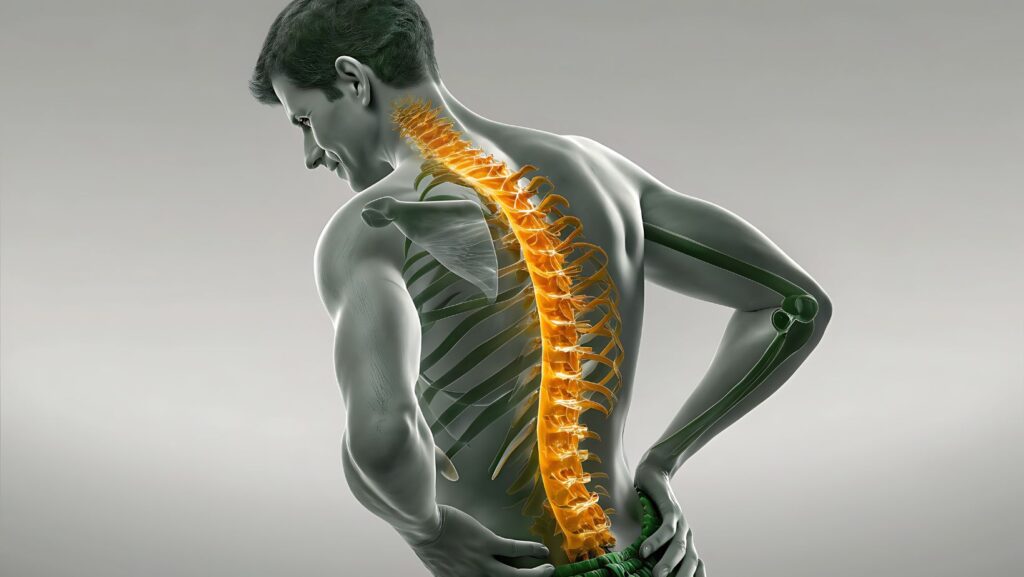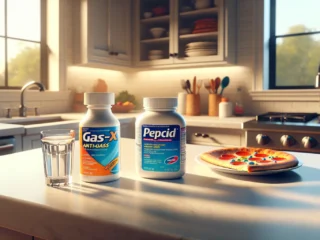
Understanding the Change in Chronic Pain Solutions
Chronic pain occurs in more than one in five adults worldwide but is still treated by most with temporary solutions such as pain medication or surgery1. Although these traditional methods provide immediate relief, they tend not to solve the root biological pathways causing pain to continue. The contemporary scientific approach focuses on chronic pain solutions that regenerate, repair, and rebalance the body on a cellular and systemic basis.
Emerging research in innovative chronic pain treatments shows that inflammation, hormonal imbalance, and metabolic dysfunction are key to the perpetuation of pain2. To treat them, there must be a shift away from suppression toward restoration, in which the emphasis should switch to the body’s natural ability to heal itself.
Why Conventional Medicine Often Falls Short
Conventional pain relief is essentially symptom-oriented as it relies mainly on analgesics, corticosteroid injections, and surgery. Although these alternatives to pain medication are necessary in acute or serious situations, they can ultimately contribute to dependence, tissue deterioration and weakening, or postoperative complications.
Such medications primarily block pain signals without repairing damaged tissues or addressing the underlying inflammation. Likewise, joint replacements or spinal interventions, though highly beneficial in certain pathologies, may not necessarily remedy the ongoing inflammatory or metabolic dysfunctions that underlie refractory pain.
All of this increased awareness has driven the medical community to explore chronic pain treatment options that heal and restore biological systems instead of merely numbing them.
The Emergence of Regenerative and Functional Medicine
One of the most promising areas in chronic pain solutions is regenerative medicine, which aims at healing and restoring the structure and function of injured tissues. As opposed to surgical procedures, regenerative means employ biological agents sourced from the patient’s own body to induce healing.
One of the most researched methods is platelet-rich plasma (PRP) therapy. PRP is obtained by centrifuging the blood of the patient to harvest growth factors that speed up tissue repair and control inflammation. Several studies show that PRP treatments for the rejuvenation of joints and tendon rejuvenation can noticeably decrease pain, enhance function, and induce long-term healing in osteoarthritis and musculoskeletal trauma3.
In advanced regenerative medicine centers, PRP is usually combined with other chronic pain management strategies, such as prolotherapy and precision injections guided by ultrasound. These treatments seek to initiate controlled inflammation that initiates the body’s own repair cascades, eventually restoring connective tissue and enhancing structural integrity.
Hormone and Metabolic Optimization: The Overlooked Dimension

One of the underemphasized but scientifically supported elements of holistic pain relief is maximizing hormonal and metabolic homeostasis. Cortisol, testosterone, estrogen, and thyroid hormones have direct effects on inflammation, healing of tissues, and the perception of pain.For instance, cortisol dysregulation (either too high or too low) is known to exacerbate systemic inflammation, and compromised testosterone or estrogen levels can undermine muscle recovery and repair. Addressing these imbalances is likely to enhance patient outcomes in chronic musculoskeletal and neuropathic pain.
Clinics embracing precision-based protocols commonly incorporate advanced hormone and metabolism testing to detect these imbalances. Treating them with specific nutritional support, bioidentical hormone replacement, or metabolic conditioning is a vital component of today’s chronic pain treatment options.
Gut Health and Systemic Inflammation
Emerging data show that gut dysbiosis, or disruption in intestinal microbiome homeostasis, can sustain chronic inflammation and affect musculoskeletal and neuropathic pain. The gut synthesizes bioactive metabolites that control immune and inflammatory responses. When the balance is disrupted, inflammatory mediators like cytokines accumulate and cause systemic sensitization to pain.
Functional medical approaches meet this challenge through the integration of dietary adjustment, probiotic treatment, and advanced diagnostic testing to maintain gut integrity. Restoration of gut integrity not only diminishes inflammation but also improves nutrient uptake essential for tissue healing. These multidisciplinary approaches reflect the concept of holistic pain relief by ensuring the whole physiological apparatus sustains recovery and not just suppresses symptoms.
Movement and Rehabilitation: Strengthening from Within
Physical rehabilitation is still essential to managing chronic pain, but it has shifted from passive to active recovery in its philosophy. Rather than immobilization, contemporary pain programs focus on dynamic movement, specific strengthening, and neuromuscular re-education.
The addition of a home fitness routine that is aimed at enhancing joint stability, flexibility, and circulation maintains long-term gains from regenerative and metabolic therapies. The synergistic intervention prevents recurrence by treating biomechanical dysfunctions that frequently accompany chronic pain.
Such methods help ensure lasting recovery and empower the patient to take an active role in their healing.
The Integrated, Personalized Model
What sets today’s innovative chronic pain management techniques apart from the past is individualization. Clinics apply precision diagnostics to chart a patient’s musculoskeletal status, hormone balance, and inflammatory markers. By combining regenerative injections, hormonal balancing, and functional nutrition, patients are given a tailored map for recovery.

This model of integrative care is supported by contemporary scientific wisdom that chronic pain is multifactorial, driven by mechanical stress, systemic inflammation, and neuroendocrine influences. Treating these interconnected systems holistically produces more long-lasting results than isolated or symptomatic interventions.
A Regenerative Future for Pain Management
Finding solutions to chronic pain mirrors a greater understanding of how the human body heals. No longer just blocking pain signals, science is finding mechanisms for restoring tissue integrity, modulating inflammation, and stabilizing hormones for sustained recovery.Integrative and regenerative approaches are now mainstream; they embody the intersection of technology, biology, and clinical knowledge. Merging alternatives to pain medication like PRP, hormonal balance, gut healing, and controlled movement allows patients to enjoy genuine holistic pain relief and functional rebirth.
The future of chronic pain management lies not in the suppression but in the regeneration, allowing patients to regain mobility, energy, and trust in the physical self.












